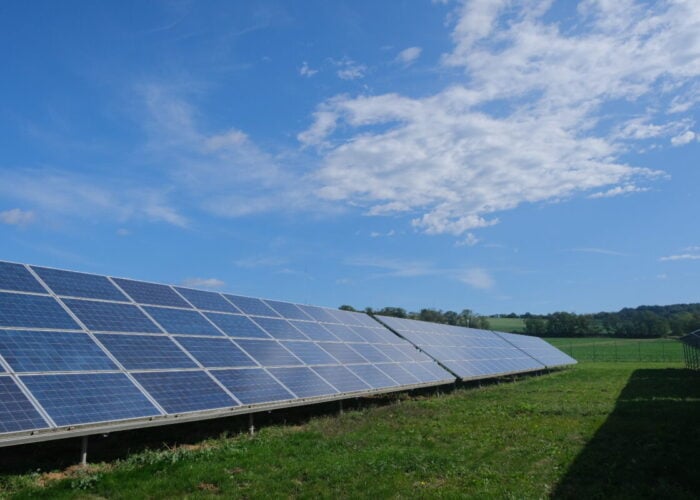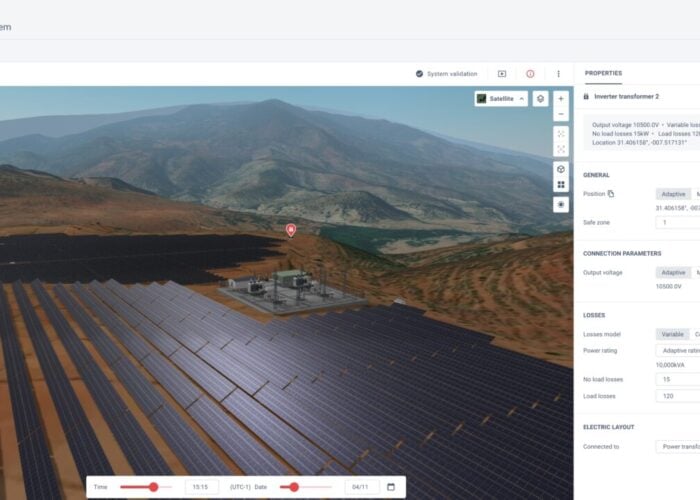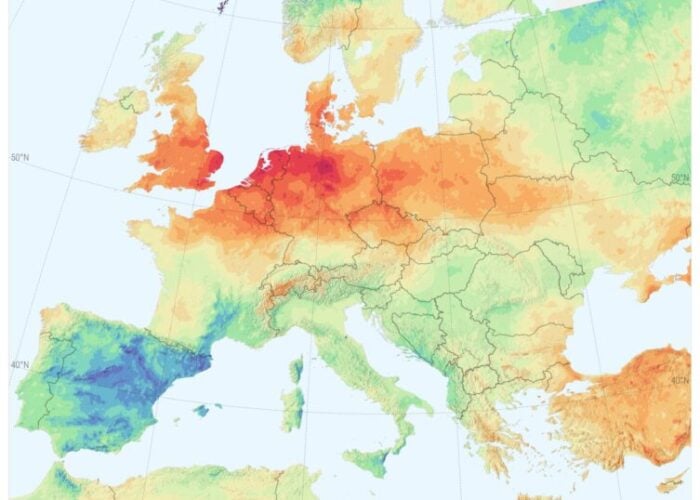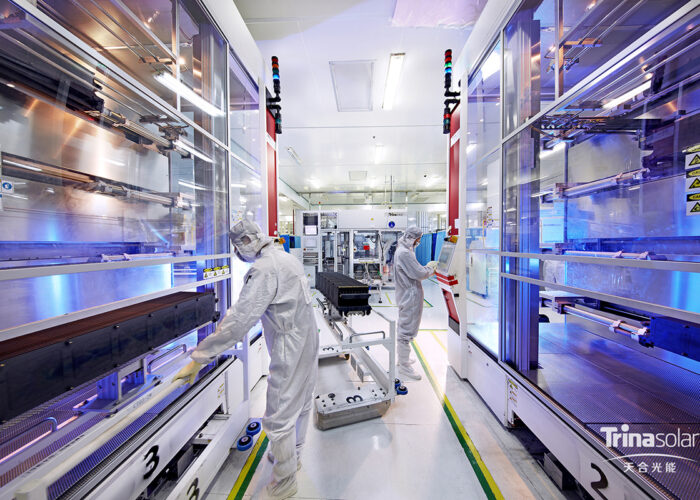
Reporter George Heynes got in touch with Solargis, a Slovakia-based weather data and software provider for solar power investors and operators, for a deep dive into maximising solar technologies in hot locations.
Unlock unlimited access for 12 whole months of distinctive global analysis
Photovoltaics International is now included.
- Regular insight and analysis of the industry’s biggest developments
- In-depth interviews with the industry’s leading figures
- Unlimited digital access to the PV Tech Power journal catalogue
- Unlimited digital access to the Photovoltaics International journal catalogue
- Access to more than 1,000 technical papers
- Discounts on Solar Media’s portfolio of events, in-person and virtual
One of the key issues around deploying solar technologies is the way they operate in extreme conditions, or in the case of this article, hot areas. It is crucial the technology adapts to the gradual heating of the Earth’s surface, especially with the latest heatwaves witnessed in Southern Europe.
It is important to dispel myths surrounding the technology, especially those that were coming out of the UK in both the summer of 2022 and 2023 in which many publications and politicians speculated that solar technology does not perform well enough or generates power efficiently in higher temperatures.
In fact, the Telegraph recently claimed that “solar panels are tested at a benchmark of 25°C. For every degree rise in temperature above this level, the efficiency is reduced by 0.5 percentage points”.
Although this can be said for older PV modules, many of the newer editions do not display such drops in efficiency. And any drops in efficiency that occur do not warrant dispelling solar as a proven, capable technology that could spearhead the energy transition and support net zero targets.
To support this argument, it is important to note just how much solar has been developed in regions with higher average temperatures than prevalent in the UK. Australia has been boosting its solar PV generation capacity, as have the US, nations in the Middle East and Africa, and in many other arid regions. In fact, harnessing hot areas of land for large-scale solar farms could benefit society by providing an area to develop solar farms without taking land up for vital infrastructure.
But how effective has solar been in these heightened conditions? And what are some of the challenges and key considerations when developing solar projects in regions with consistently high temperatures?
Slovakia’s Solargis has since 2010 been developing and operating software and data sets enabling fast access to historical, recent, and forecast data for almost any location on Earth. The following is Solargis’ article on the topic, kindly provided to PV Tech Power.
How to Maximise Solar Tech in Hot Locations
The growing potential of solar energy across the globe is persistently challenged by a plethora of uncertainty surrounding module inefficiency. An increasing prevalence of extreme heat has changed the risk profile for solar energy, as temperature variability becomes a key challenge for solar investors and operators. To validate the capability of PV technology, and therefore ways of mitigating the impact of hot conditions, we must use reliable and accurate data to inform decision-making and maintain system reliability as energy demand continues to rise.
The solar outlook for 2023 has, so far, displayed a trajectory towards increasing temperatures across Canada, North America, and Europe as imminent heatwaves loom. Throughout June 2023 we saw Belgium, Germany, and France experience up to a 4°C increase above long-term average temperatures, whilst wildfires raged across Canada and Southern Europe. The shift in global temperatures has placed the potential of solar energy and the subsequent relationship between heat and solar irradiance under increased scrutiny.
The relationship between heat and solar irradiance
There is no consistently defined correlation between heat and higher solar irradiance. Instead, solar resource output hinges on project design informed by geographical location, climate, and topography. Depending on these variables, hot conditions can create different risk profiles that increase uncertainty for solar investors and operators.
For example, in June 2023, the MENA region, which has an arid and hot climate, produced up to 280 kWh/m2 of Global Horizontal Irradiance (GHI). The by-product of this intense solar irradiance is heat, which increases the overall air temperature. Solar cells are temperature sensitive, which in extreme heat can cause issues relating to overheating of PV components, causing disruption to project output.
In tropical climates, solar irradiance increases the air temperature and therefore the rate of ground water evaporation. As a result, it can produce scattered clouds which increase solar irradiance variability. Solar projects in these regions often require bespoke strategies and additional storage to manage variability.
These examples capture two different risk profiles relating to hot conditions that solar investors and operators need to navigate. Integrating this understanding into the design phase of a PV project can help to ensure that PV plants maintain system reliability and avoid costly downtime.
Navigating the impact of hot conditions on PV technology
For traditional crystalline modules, every 1°C above 25°C loses approximately 0.4% efficiency, reducing the maximum power output for the PV module. Therefore, the higher the temperature, the less power generated.

Direct causes: increased degradation, failure risks, soiling, corrosion, reduced output
In a hot climate, PV technology will be subjected to more extreme temperature ranges between day and night. Each material has its own expansion coefficient and with higher temperature changes, higher dimension changes can occur. These additional movements result in a faster rate of mechanical degradation of materials since they are put under greater strain.
Additionally, sudden temperature shifts from morning to afternoon may increase the accumulation of dew on cold surfaces. As a result, PV modules get sticky and accumulate more dust, causing steel parts to become more corrosive. Also, any wet surfaces that come into contact with electronic components are more likely to fail through problems such as an increased risk of short circuiting.
Hot conditions can also impact the efficiency of the inverters. Inverters contain a temperature overloading protection system, whereby if the internal temperature rises above a given level, typically between 40-50°C, depending on the model, the inverter will reduce its output to protect itself from overheating. Therefore, the overall expected power output will be lower than in the original design.
Indirect causes: surface albedo, cooling effect of vegetation
As the climate changes, an increase in heat can alter the landscape surrounding the PV power plant. This can impact power generation through a change in surface albedo, especially in bifacial PV module installations. The increased heat can reduce the growth of vegetation and therefore modify the rate of diffuse reflection of solar radiation from the ground back to space.
For example, green grass has a diffuse reflection value of 0.20-0.25 which means that the surface reflects 20-25% of the received radiation, whereas bare soil only reflects around 17%. Additionally, the cooling effect of the environment surrounding a PV power plant is reduced, causing further temperature increases at the site.
As a result, the alteration of the landscape can result in a generated power output that significantly diverges from the expected power output set by solar project operators. An understanding of the impact of hot conditions is frequently absent from PV project design. The variability between projects can make financing problematic due to high uncertainty regarding future production.
Improving PV design to customise for hot conditions
To mitigate this, solar operators and investors require accurate data to inform better decision-making. Understanding the spatial and temporal variability of GHI provides a necessary insight for assessing the efficiency of a given solar project. However, there is a lack of reliable and accurate data available that captures a true representation of temperature variability.
To improve the efficiency and resilience of solar projects in hot conditions it is vital to leverage accurate and meaningful data, most importantly throughout the early design phase. Having access to precise historical temperature and current irradiation values is highly valuable in analysing trends and predicting future scenarios. Using this in the design phase, where estimation of power output is considered together with technology, is central to informing best practices and intelligent decision-making.
Time series data – for example, at a resolution of 15-minute intervals – uses high frequency collection to pinpoint temperature variability and improve the resultant accuracy of modelling. For simulation and future estimation, it can provide a dramatically clearer picture of the existing and anticipated behaviour of a PV power plant.
Moving beyond typical meteorological year (TMY) datasets, that only show long-term annual averages, allows solar operators and investors to monitor and analyse multiple parameters to elevate the operation and output of their PV technology. These include wind speed, direction, relative humidity, and rainfall.
Solar investors and operators need to optimise their project using accurate and granular data. Doing so will improve confidence and strengthen future decision making to unlock the full potential of PV projects. As temperature variability becomes more frequent, never before has there been a greater need to understand how hot conditions can affect solar energy management.





